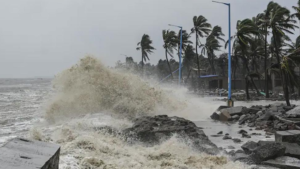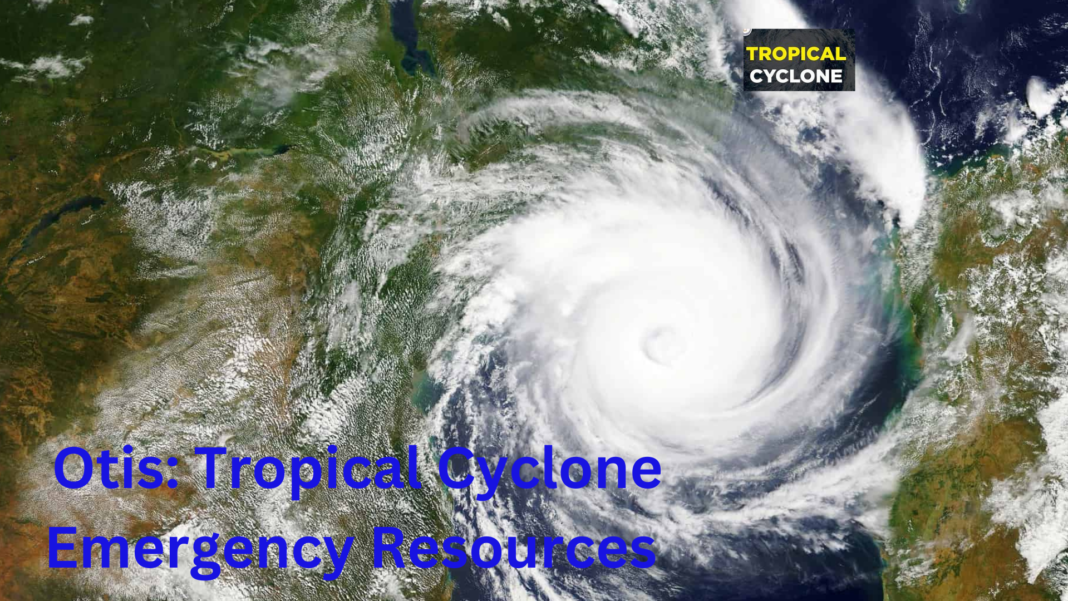Introduction
Tropical cyclones are a climate changes, strong rush of water vapors and air blast is also known as hurricanes or typhoons, these tropical cyclones are some of the most destructive natural elements, create disasters on the earth. It is a powerful storm like Otis threatens, it creates horrible situation to have access to the right resources to stay safe and minimize the damage. This article is a comprehensive guideline to the emergency resources available before, during, and after a tropical cyclone, with a focus on the potential impacts of Cyclone Otis.
Preparation Resources tropical Cyclone Emergency Resources
1.Emergency Kits and Supplies
Before Otis makes landfall, ensure your emergency kit is all time ready. The kit should include:
– Water and Food:
In this climate disaster, one should have at least three to four-days’ supply of water (one gallon per person per day) and cooked packed food like, biscuits, chips, cakes and dry fruit.
-Medications and First Aid:
According to prescription of a doctor, medications are a must in basic first-aid kit, and any necessary medical supplies like pain killers, ointment, bandages, antiseptic.
-Communication Tools:
It is very important to have battery-powered or hand-crank radios, extra batteries, and a mobile phone with a portable charger and headphones, mobile calls and WhatsApp package
-Personal Documents:
One must have important documents like id card, insurance policies, identification, and bank records in a waterproof container.
– Tools and Supplies:
A chargeable flashlight, multi-purpose tool, duct tape, and sanitation items are necessary.
– Clothing and Bedding:
Sturdy shoes, warm clothes, and sleeping bags.
2.Local Evacuation Plans Tropical Cyclone Emergency Resources
Know your community’s evacuation routes and the location of nearby shelters. Authorities normally provide these plans in advance of a cyclone’s arrival to familiarize the routes, of coastal or flood-prone area. Always heed evacuation orders from local authorities when Otis approaches.
3.Tropical Cyclone Emergency Resources Emergency Alerts
Sign up for emergency alerts through your local government or weather service. These alerts can be received via text message, email, or smartphone app, keeping you updated on the status of Otis, including wind speeds, expected landfall, and evacuation notices.
During the Cyclone Tropical Cyclone Emergency Resources
1. Shelter-in-Place Guidelines
If you are not in an evacuation zone or if it’s too late to leave safely, shelter in place:
– Stay Indoors:
Remain in a secure room on the lowest level of your home, away from windows and doors.
– Use Emergency Radio:
Listen to emergency broadcasts for updates.
– Avoid Using Electronics:
Unplug small appliances and avoid using electronics connected to electrical outlets.
2.Power and Communication Outages
Power outages by having backup power sources should be ready such as generators or power banks. Conserve phone battery by limiting use, and only text messaging rather than voice calls to stay in touch with family and friends.

3.Flood Safety during Cyclone
During Otis, be aware of the potential for flooding, especially in low-lying areas:
– Do Not Walk or Drive Through Floodwaters:
Don’t walk or drive in to six inches of moving water, it can knock a person down, and one foot of water can sweep a vehicle away to deep water.
– Move to Higher Ground:
When you face cyclones flooding, people are advised to move to a higher floor ground.
Post-Cyclone Recovery
1.Emergency Contacts and Services
After Otis has passed, your first step should be to check in with emergency services:
– Emergency Numbers:
Have local emergency numbers handy, including those for police, fire, and medical assistance.
– Red Cross and FEMA:
Contact the American Red Cross or FEMA for emergency assistance, including temporary shelter, food, and financial aid.
– Local Relief Organizations:
Many local nonprofits and community organizations offer resources like food, clothing, and home repair help in the aftermath of a cyclone.
2.Assessing Damage Safely Tropical Cyclone Emergency Resources
- Once it’s safe to go outside, assess the damage:
– Avoid Downed Power Lines: Report downed the power lines to the local utility company and stay at least 30 feet away from it.
- – Check for Gas Leaks:
During disastrous flooding and hurricane if you feel smell of gas, turn off the supply and leave the house immediately.
- – Inspect Your Home:
Look for structural damage before entering your home and take photos for insurance purposes.
3.Mental Health Resources
Cyclones like Otis can be traumatic, and it’s important to address mental health needs:
- – Counseling Services:
Reach out to local mental health services or national hotlines for support.
- – Community Support:
Engage with local community groups, which often provide both emotional and practical support.
Conclusion
Tropical Cyclone Otis underscores the importance of preparation and having access to the right emergency resources. Whether stocking up of flood following evacuation orders, and seeking assistance after the storm, these steps are vital in protecting yourself and your loved ones. By staying informed and prepared, you can navigate the challenges posed by such powerful natural events with greater resilience.



